Towards the end of May, I was invited to Singapore for its premier tradeshow, Blueprint. To the best of my knowledge, Blueprint uniquely specialises in launching cruise collections and thankfully curates fresh and forward menswear alongside womenswear, jewellery and accessories from emerging designers destined for international markets. Showcasing one hundred and twenty brands from eighteen countries, Blueprint is a fashion trade gateway for East-West exchange. Over the course of a few hectic days, I explored this lively Asia based platform dedicated to Singaporean and regional design talent and encountered a few gems in the process. The local highlight was undoubtedly Sifr.
The brainchild of Chris John Fussner and Suraj Melwani the label evolved from Suraj's conceptualised multi-brand clothing store KIN. Since its inception, Sifr's designs have showcased refined lines, quality materials, solid construction, and minimal detailing. The brand name means empty or zero and there is certainly an emphasis on a stigma-free approach. During my time in Singapore (thanks to introductions from Austin from Why You Mad?), I was able to spend a bit of time talking through the label's development whilst examining its considered product with the men behind it all. Here, months after initial introductions, we catch up with the duo to help tell the story of the label...
SS: What were your inspirations, your dreams and the driving catalyst behind launching your own label?
Chris John Fussner: I am fascinated by the process of taking an idea and manifesting it into a tangible service, solution, product or lifestyle. Doing a report on Da Vinci in the 5th grade had a big impact on me, seeing a single human being manifest so many ideas into reality is something to strive for.
Suraj Melwani: First and foremost, I didn't think we were trying to reinvent the wheel. Coming from Asia, we felt that we were able to offer beautifully made, relevant clothing to a wider audience. We have all the resources at our feet and we're able to really focus on quality and design while still using premium fabrics, etc. We have a great team out of Singapore that specializes at different things as well as a production team out of Indonesia who we sincerely care about. This sincerity translates into well made products.
SS: What does Sifr mean to you?
Chris John Fussner: Sifr is a space for exploration and sharing. sifr leads us into new areas all the time, we're constantly learning and trying new things. It's all part of the process and relationship we've developed with the company. The company is like another person. A good friend, someone that your constantly in conversation, someone that you're always learning and sharing with.
Suraj Melwani: Sincerity. It is a reflection of who we are as people and how we work. If we can better ourselves and what we do, we're always up for it!
SS: Born in 2009, how has the label and your approach to it evolved over the years?
Chris John Fussner: It has been a roller coaster; such is life! A process of self discovery and growth, the label has continuously evolved. We are in a space now where we are very comfortable with how we are expressing ourselves. If there's anything I've taken from the labels evolution: design and business must dance together in rhythm, don't make things too significant, and patience.
Suraj Melwani: When we first started, we focused on creating a tight-knit collection. However, with all of our resources, we're able to work with knits, prints, footwear, etc. This has created somewhat of a dilemma for us. Since we're able to make more interesting garments and accessories, we've tried to stay away from in-depth specialization. We've tried not to create one single product that people can identify us with. This can be a double-edged sword but that's what makes us special. We're able to make a lot of great things, so why not keep going.
SS: How would you describe your style and your own design philosophy?
Chris John Fussner: If I see someone wearing something in real life travels, in a movie, a comic book, anime or in my dreams I'll consume and re-interpret. I must confess that I in the last few months I've been feeling like Ghost in the Shell meets Acronym and Gyakusou. I've been itching to purchase some all black Vibram Five Fingers, that would definitely complete a nice tech-ninja look. I wish I had some therm-optic gear. As for design philosophy, we create what we love, there's a lot of personal sensibilities in the clothes we make. We merge these sensibilities with ideas and concepts we want to express about where we are from and what we like.
Suraj Melwani: As people, we tend to like our space and room in terms of our surroundings. For myself, it translates into clothing as well. I like clothing in breathable silhouettes. I like to be comfortable and I prefer clothes with room like what Kolor is doing. Currently, I'm pairing relaxed fit shirts with relaxed fit trousers. Sometimes it works, sometimes it doesn't but you end up feeling like you could roll out of bed and go to work. We're also lucky to be in South-East Asia, where we can see people who put themselves together that don't really make it a focal point to always look good, but eventually do so. Seeing them not put any effort but looking well is always inspiring. That's how design should be; closer to your life and closer to reality.
SS: Could you tell us a bit about the dynamic behind Sifr? How do the two of you and the rest of your team work together, what do each of you bring to the label?
Chris John Fussner: I wish the roles were a little more clear cut and defined but at the same time I think that's what keeps it fun. It's a small team so everyone does multiple jobs. I find myself doing everything from sales, fabric, design, branding, marketing, tech, pr; a little bit of everything. A lot of the process is co-creating / collaborating with each other, a lot of the decisions and process involve a group mind. Which I find very interesting because if we weren't creating in a group mindset the outcome would be very different. In that space of a group mind there are a lot of conversations back and forth which produces something unique to the brand and to ourselves as individuals being part of that process.
Suraj Melwani: I usually handle production and use my spare time to think of ways we can save money. Initially we kept our tasks quite defined and I found myself in the middle of design and production. However, upon receiving a batch of garments that the team weren't too keen on they quickly (and regularly) made it known that group work was their preference. I like the PR side of the business. Listening to what people say is really important to us, just not when it's at some party/loud bar where listening is not really possible.
SS: Since 2009, Sifr has been engineering refined garments (and now footwear) for forward looking men who seek quality, affordability, and design that’s relevant to their lives. What were the first and last item you remember designing?
Chris John Fussner: I remember finding this tight black and white floral print on the street parallel to our old office, a Liberty-esque sort of vibe but a little more minimal and the floral pattern was very tight so from a distance it looked more like a texture. Then we took the fabric and made a button down short sleeve. It's my favorite shirt to this day. The last item I remember designing was for this last SS12, the marigold orange nylon poncho with a kangaroo pocket that the poncho can fold into for utility.
Suraj Melwani: I started with this pleat t-shirt that we're actually re-interpreting for this season again. It did really well for us. It was a cotton modal piece that draped very nicely. I remember doing a cotton spandex shirt as well with some leftover fabric. It shrank a whole size down over time but I loved it so much I didn't want to let it go even though it looked like I borrowed something from my sister's closet. Last item I designed was the "lazy" blazer that is a crucial part of our line and will continue to be something we work on regularly.
SS: The SS12 collection, entitled ‘Belonging’ was born from a process of reflection on the core beliefs behind the Sifr brand. Could you talk us through your latest collection and how the label itself inspired you.
Chris John Fussner: Cash is king, it's not the sole reason we do Sifr, but without it we're not able to continue creating and sustain the family we've built with the brand. We found ourselves being trapped in just producing tiny capsule batches for the local market and within those batches we caught ourselves losing the plot about why we created the label in the first place; create great quality products and have a good time doing it. We found ourselves just producing for the sake of producing, although the product was not bad it just wasn't presented in the context we wanted.
The collection looks at subtle detailing, great fabrics combined with superb construction. The use of a somber palate of earth tones and a splash of marigold orange, the marigold is a big signifier in South and Southeast Asian culture. We brought some traditional detailing from age old garments from South and Southeast Asia into a current context. Transparency and opacity are both explored in the collection as well, playing with weights and layers in relation to the weather in Asia. All things pulled together the collection is an expression of clarity and logical thought.
SS: Sifr interprets crafting in a modern, globalised way. You want to create high quality products in a financially feasible way. Craft and local manufacture are obviously very important to you and are dear to us too at Style Salvage. Can you talk us through some of the process involved in creating the range?
Chris John Fussner: Ideally we would have loved to produce everything out of Singapore however in the last few years the garment manufacturing industry on the island has almost disappeared; I've heard you can count the number of manufacturing operations left on the island with your fingers. The next best thing we could do was travel 1 1/2 hours away to our neighbor Indonesia, Suraj's home town and start sourcing over there. Since the disappearance of the quota system and the advent of China a lot of manufacturing and production has since vanished. However we stuck to our guns and started doing detective work in early 2010. At this point in time we are lucky to be working with a handful of people there that are providing a stable base for us to pursue the overseas market. These relationships allow for an open dialogue in the process, like all processes there is a beginning middle and end. In our case we're lucky to have a great dialogue in the middle, in the past it was just emails and we'd see a few samples before production and then that was it. Now we have one of our team members over in Jakarta working directly with our suppliers and we fly over at least once every month or every two months. Where we are able to discuss and brainstorm what we want to convey in the product with our ideas. In this conversation we get these gems of feedback, suggesting a different construction method on the pattern, or to try this other material or to consider a different thread or stitch because of the fabric weave. So it's that dialogue that takes place between the first sample and the pre-production sample that makes all the difference. We're able to get a deeper connection with the process.
Suraj Melwani: The people really do it for us. Initially, we were always a little shy to say that our clothing was made in Indonesia but upon experiencing the production process these last few years, my ideas and thoughts changed. I studied in New York and I've seen clothes made in the US and shoes made in the UK. They are beautiful but the same can be said about things that are made in Indonesia. The people behind the product are amazing. Indonesia has long been a mass manufacturing country and after it lost some of it's market share to China, the skilled workers still in the garment business are now focusing more on quality products. These guys can now channel their efforts into smaller quantities and better quality. Our pattern maker is supremely talented and just as good as anyone out there. Indonesians don't speak loudly, they do most of their talking with their hands.
SS: Finally, how do you see the brand developing over the next couple of years?
Chris John Fussner: We're hoping in the next few years we would have done enough to make way for other labels coming out of of Southeast Asia. A flagship, somewhere in the world! A company and brand that's able to create room for other mediums of expression whether in different products or in concepts. A platform for global collaboration.
Suraj Melwani: I'll call it a successful brand the day that it has an impact on people that stretches beyond quenching their thirst for beautiful clothing. The production of the clothing already benefits members of our manufacturing circle and I'd like to see how it can benefit others outside of that. I see the brand taking a more organic route toward success. On a short-term note (as well as longer), I see the brand image strengthening to the point where people will have a clear idea regarding what we are all about.
Interview accompanied by my shots of the collection from Blueprint.
----------
Timely for me, sifr's SS12 collection was born from a process of reflection on the core beliefs of brand and thus served as the perfect introduction. Chris John and Suraj are dedicated to creating products that express premium materials, solid construction and deep thought. The resulting designs explore the versatile semi-formal and casual wardrobe staples that are just perfect for everyday wear. as shown by their SS12 look book.
Look book images courtesy of sifr
With good menswear, you really do not have to reinvent the wheel each season. However, the design duo behind sifr certainly do help polish the spokes through their constant process of research, refinement, and unquenchable thirst to improve

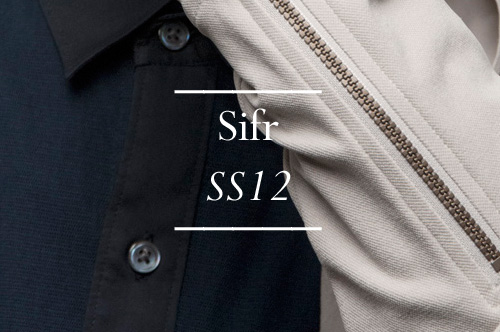
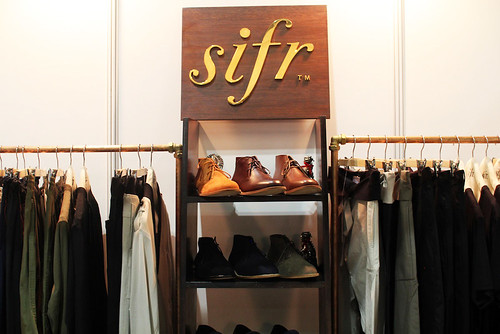
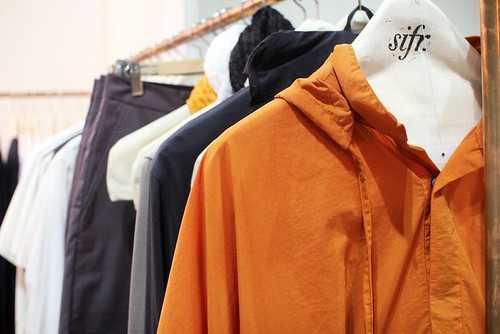
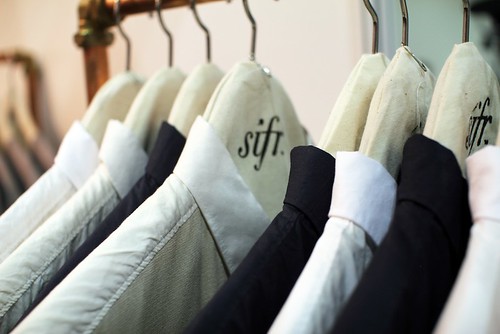
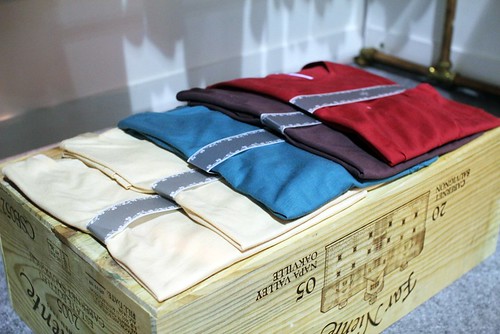
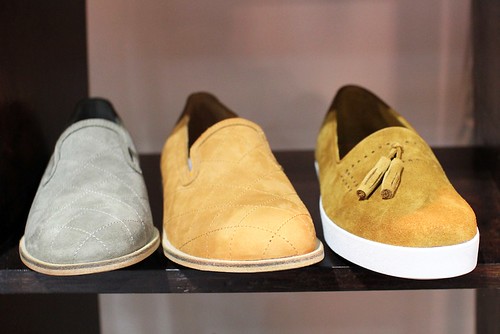
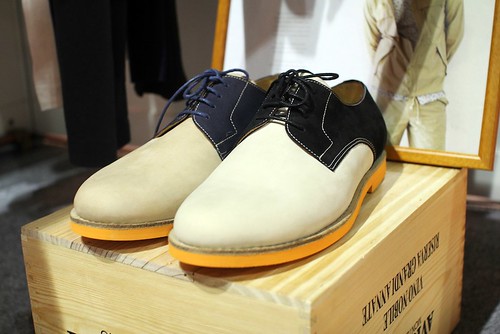
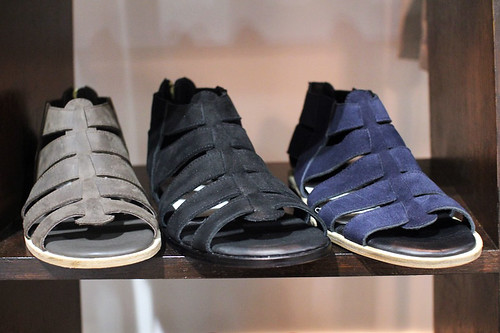
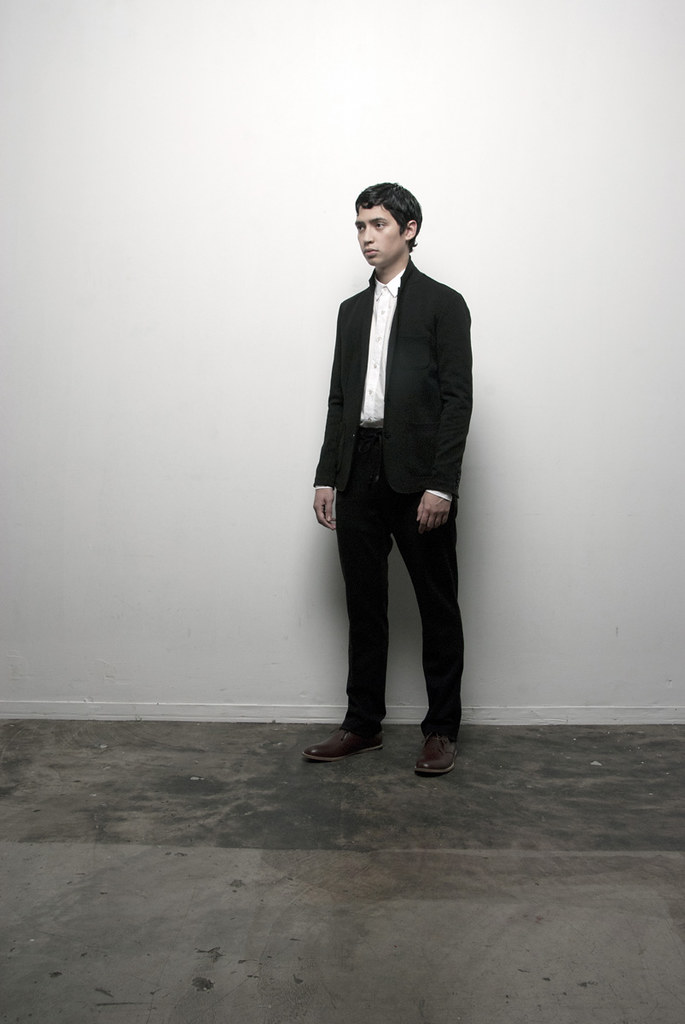
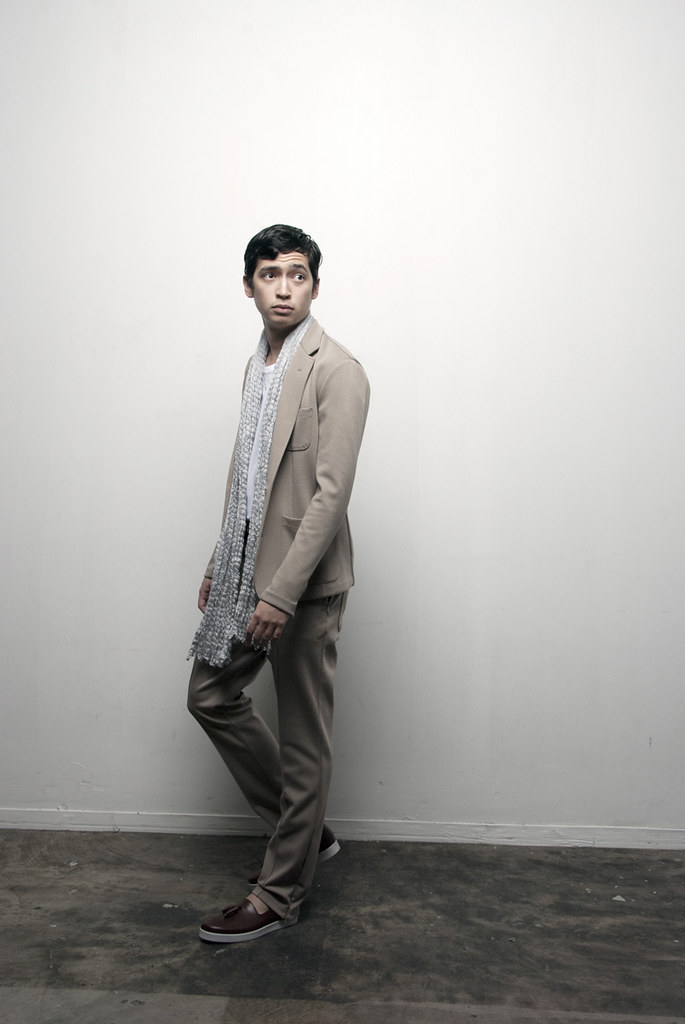


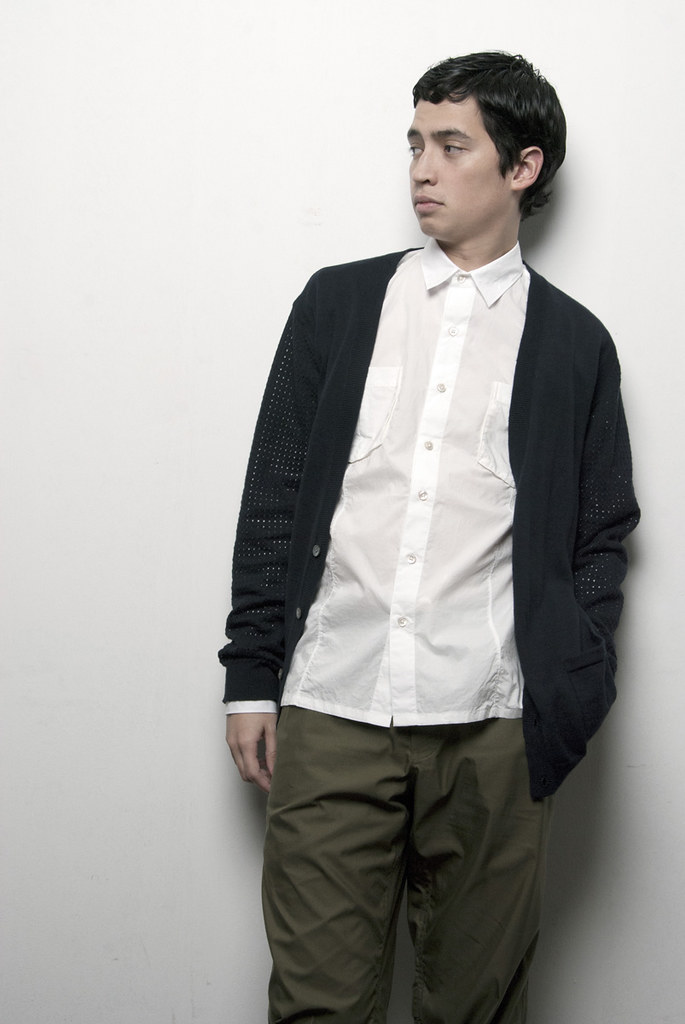

3 comments:
very cool post. it's always great to hear about new designers that we dont get to see as much here in the states. next time you guys are in town, pop in and say hi. we'd love to hear more from you.
regards,
Rothmans
What a great interview, thanks! Love the design especially the footwear collection.
Great post shared by author. I appreciate it. Thanks for sharing this informative post. Keep posting updates.
Ninja Gear
Post a Comment